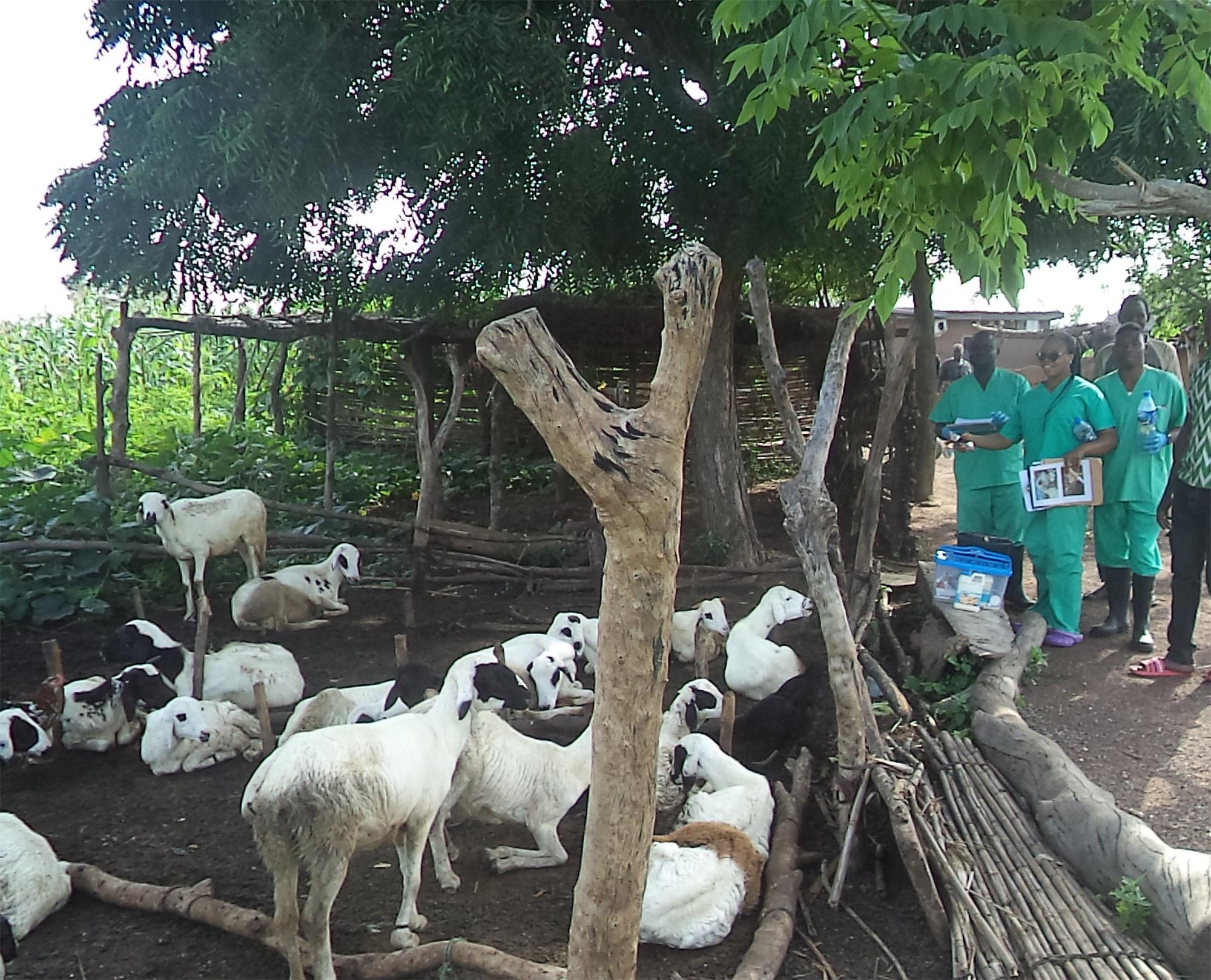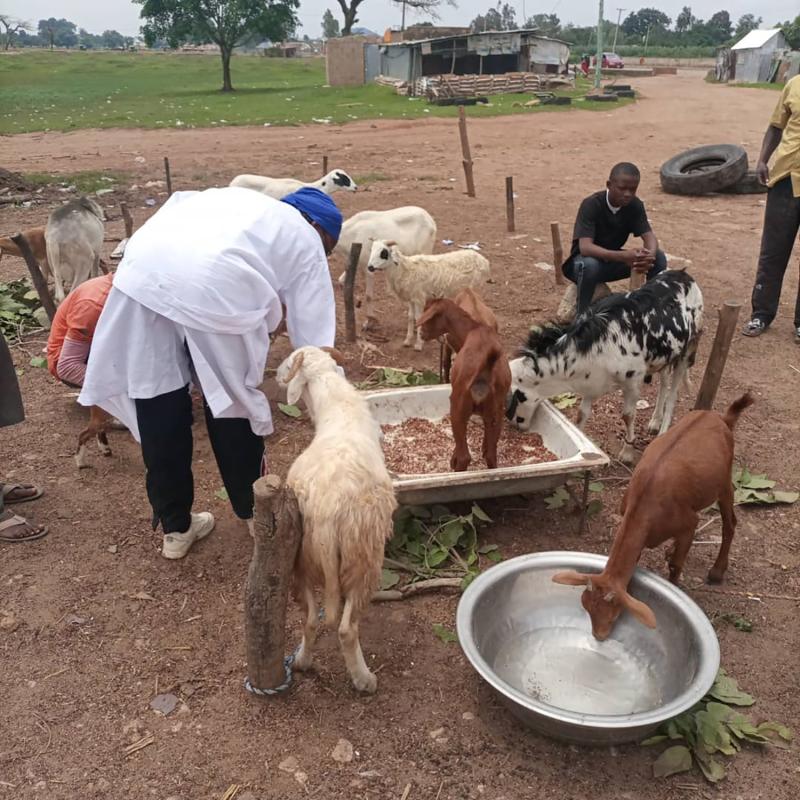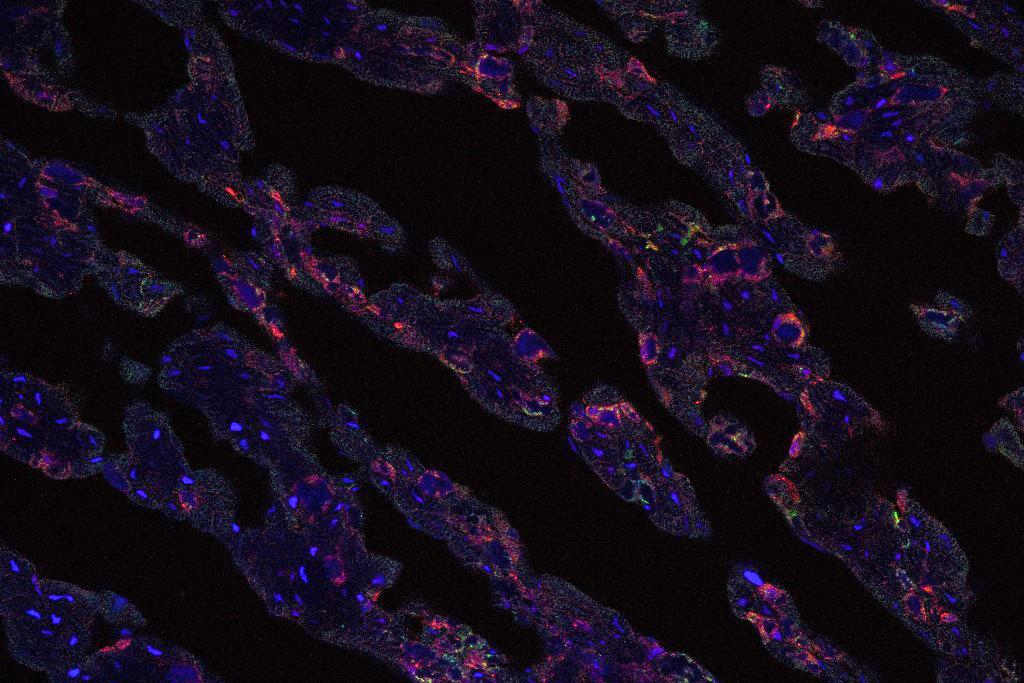Scientists from The Pirbright Institute have led a longitudinal study of foot-and-mouth disease (FMD) in collaboration with the National Veterinary Research Institute (NVRI) in Northern Nigeria.
The project investigated the role that small ruminants and contaminated environments have on the endemicity of FMD, and the implications for disease transmission, surveillance, and control.
The team evaluated the use of serum samples, oral swabs and environmental swabs in order to identify the most effective methods of detecting FMD virus (FMDV) in endemic settings.
The study, published in Veterinary Research, showed that swabbing environments where livestock are kept can play a crucial role in detecting FMDV.
“We found that environmental sampling was highly effective and a good herd level indicator of FMDV circulating in the area” said lead researcher Dr Simon Gubbins.
“The method is of particular value in places where sampling individual animals is challenging or not feasible.”
Dr David Ehizibolo lead researcher from NVRI added “Taking swabs of surfaces likely to have been contaminated by secretions and excretions of infected animals, including boots, transport vehicles or hard floors, presents an opportunity for non-invasive sample collection, enabling FMD surveillance at herd level and beyond the regular investigation of clinical cases.”
Environmental sampling in a household in northern Nigeria.
Combining recovery of viral RNA from contaminated surfaces with sequencing of viral genomes allows for strain identification and outbreak tracing. The study found sequences obtained from environmental samples were closely related to those submitted from clinical samples to the World Reference Laboratory for FMD (WRLFMD) at Pirbright, confirming environmental sampling can be used as an effective surveillance method in endemic settings, especially when combined with sequencing, allowing for outbreak tracing.
Researchers used the samples and data collected in the field to estimate epidemiological parameters important to understand FMDV transmission in endemic settings. This showed that cattle and sheep, but not goats, are likely to be most important for spread.
“Our study highlights the importance of conducting field studies to understand disease transmission where FMDV is circulating in order to plan targeted and feasible control policies”, said lead researcher Dr Georgina Limon-Vega.
As the home of the World Reference laboratory for FMD, Pirbright plays a critical role in diagnostics, surveillance, and advising the UK government, the World Organisation for Animal Health (WOAH) and the Food and Agriculture Organization of the United Nations (FAO).
Read the paper
Gubbins, S., Brown, E., Wungak, Y. et al. (2025) Longitudinal study of foot-and-mouth disease virus in Northern Nigeria: implications for the roles of small ruminants and environmental contamination in endemic settings. Veterinary Research 56 https://doi.org/10.1186/s13567-025-01502-2


